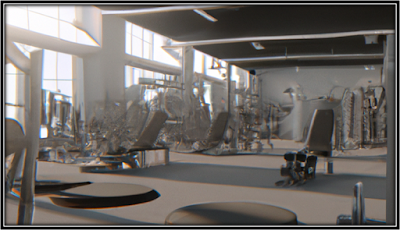$75.00 USD
Recent Upgrades: Fully integrated monthly and annual 3-statement model (Income Statement, Balance Sheet, and Cash Flow Statement) as well as a Cap Table, dynamic capex with depreciation, and a brand new way to define revenue assumptions as well as sources to optimal gym membership count (sources in file).
This template attempts to address all the major assumptions that you may want to tweak in order to see how much cash you need and when you will have various free cash flows. There could be expansion costs you want to account for, growing members, and additional hires / monthly expenses.
This template attempts to address all the major assumptions that you may want to tweak in order to see how much cash you need and when you will have various free cash flows. There could be expansion costs you want to account for, growing members, and additional hires / monthly expenses.
It will also be important to test various price point combinations with various monthly costs to see worst / best case scenarios and what the cash flow of that looks like. The bank is also going to want to see what that looks like.
Having a financial plan gives you actionable steps to take and helps you at least know under what scenarios you will burn more cash than you have and as such what kind of assumptions you need to test for.
In the model, you will be able to enter over 70 fields for capital asset purchases. These depreciable items include bench machines, bike machines, free weights, and all kinds of racks. Data entry includes the item name, depreciable life, and cost for each item. This gives you an idea of your initial cash outlay.
Once you begin operations, the gym might not by profitable right away. That means you have some net burn until you gain enough members to break even. This is all accounted for in the model and will alert you to the largest monthly deficit that your cash position will get to based on the assumptions.
In order to better plan for scale, you will have a fixed expense schedule that allows you to pick the month an expense item starts as well as the amount of that expense over the 10 years.
Financing can also be adjusted by amount, month it starts, and the rate/term.
Revenue Forecasting
I did quite a bit of research on how to calculate the optimal gym member count or target. This is a special table that was built into the template. You can enter the spec of your gym and it will give you a target max membership count. The assumptions are then centered on that number. You will be able to define the expected percentage of maximum capacity attained at launch and the percentage increase in in member count over time. Once the maximum capacity is achieved, no more members are added.
Then, simply enter the expected monthly price that members will pay and that is adjustable each year.
Exit Assumptions
Having exit assumptions doesn't mean you plan to sell for sure, but it is important when determining the IRR / DCF Analysis of the project and helps give investors an idea of what their real returns may be.
There is logic that allows you to define if you want to include an exit value of the business based on either an EBITDA multiple or a percentage of trailing twelve month revenue. You can also account for any proceeds that may come from the sale of the building(s) if you bought instead of rented your space. If rented, you can easily set the assumptions up to account for that.
In order to give a clear picture of revenue and expenses, there is an annual Executive Summary. That will draw from the monthly and annual summaries, which populate based on all the assumptions you input into the model.
An IRR and Return on Equity figure will populate on the executive summary as well as the net cash position and net cash earned before taxes based on your total draw down.
Questions and Answers From Customers Who Purchased This Template:
Customer Question:
Had a question on how to treat the "Building" input to address a lease liability and tenant improvements (our buildout for this Fitness facility will be ~$x.xM in capital).
Answer:
You can simply enter the capital expenditures in the 'CAPEX' tab by entering the description, amount, useful life, and month of expenditure in the "Building" row. Then, in the 'value at sale' column, simply hard code in the same value as the book value at sale column. This effectively makes the gain/loss zero out. You can also enter cost segregated values below that, but if you do, that will require hard coding of all 'Value at Sale' inputs on the CAPEX tab.
More Industry-Specific Bottom-up Financial Models:
